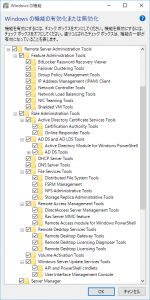


The RSAT includes Server Manager, Microsoft Management Console (MMC) snap-ins, consoles, Windows PowerShell cmdlets and providers, and command-line tools for managing roles and features that run on Windows Server. Anyway, I won't worry that much and enjoy that it is fixed now.It’s a short guide to install Remote Server administration tools for Windows 10. In 2 of the computers with this problem, I am pretty sure that RSAT was installed, but the third one, no way, cause it was a regular user computer. On the other hand, I've seen that this patch is RSAT (Remote Server Admin Tools). I tested the VPN connection again and it worked. It just will pop up for a "Yes" to confirm. And the uninstall of KB2693643 was the only thing that really WORKED, and I tested it succesfully on the 3 computers where we were having this problem!! I did it easily with command "wusa /uninstall /kb:2693643" on the Command Prompt (opened as Admin). I had already realized that forcing a fixed IP manually, plus mask and DNS on the Fortinet SSL VPN Virtual Adapter was a working workaround, but I was still trying different things everyday for the last 2 or 3 weeks to try to find a definitive solution. Wow!! James, I don't know where you found that, but you nailed it!!!! I had the same problem (Forticlient 7., Windows 11 22H2:( Forticlient shows "Connected" and a valid IP address given via DHCP, however you cannot access anything on the corporate network, since your Fortinet SSL VPN Virtual Ethernet Adapter, actually gets an automatic IP (APIPA, .x) and not the one informed by Forticlient.


 0 kommentar(er)
0 kommentar(er)
